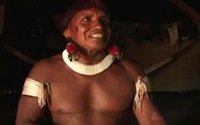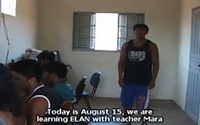The Upper Xingú Carib Language (LKAX) is classified, since the work of Karl Von den Steinen, as belonging to the Carib family (Steinen, 1894). Now we know that it pertains to one of the two southern branches of the family (Meira & Franchetto, 2005; Meira 2006).
The Upper Xingú Carib language has two main dialects: the one spoken by the Kuikúro and Uagihütü (old Matipú) people, and that spoken by the Kalapálo, Nahukwá and Matipú. These varieties can be distinguished by differences in lexicon and, above all, by differences in their rhythmic structures or prosody. Linguistic identity is one of the most important symbols of social identity among the local groups.
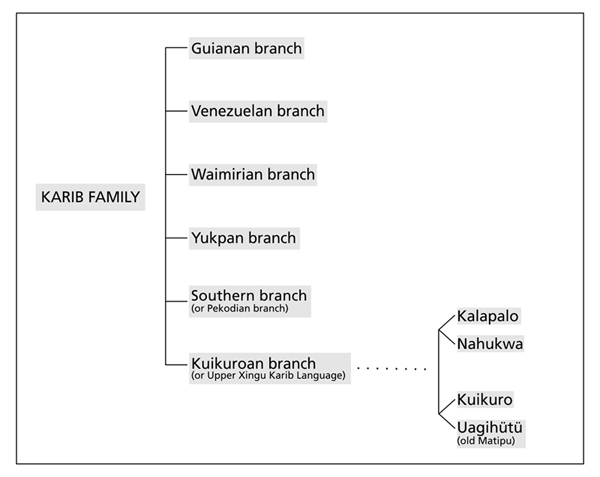
The Upper Xingú Carib Language and the Carib linguistic family (apud Meira, 2006)
Phonologically and morphosyntactically, the Upper Xingú Carib language shows characteristics that are unique in the Carib family. Phonologically, we find articulatory dorsalization, lenition processes, dissolution of consonantal groups, and the impossibility of any kind of segment in syllabic coda. The Kuikúro is a head final language and it is ergative, from the point of view of the morphosyntactic typology. The morphology is extremely rich, with many processes of derivation and valency change; there are five nominal and verbal inflectional classes. The pattern of constituents order in Kuikúro is complement-head (OV). The internal argument of the verb is the patient of a transitive event or the theme of an intransitive event, occurring strictly in pre-verbal position, and forming a phonological unit with the verb. Internal arguments are not marked morphologically for case. With transitive verbs, the agent behaves as a postpositional phrase occuring after the OV sequence in a pragmatically neutral order, or before OV when focused or topicalized. There are no auxiliaries.
The orthography for the Carib Upper Xingú Language and its dialects was developed during intensive courses organized to train Indigenous teachers and it is used to write educational materials for native schools. It is currently used in the Project for transcriptions, besides phonetic transcriptions. A vast collection of written texts is produced by the Indigenous teachers and part of them has been already organized and published as books used in village schools.
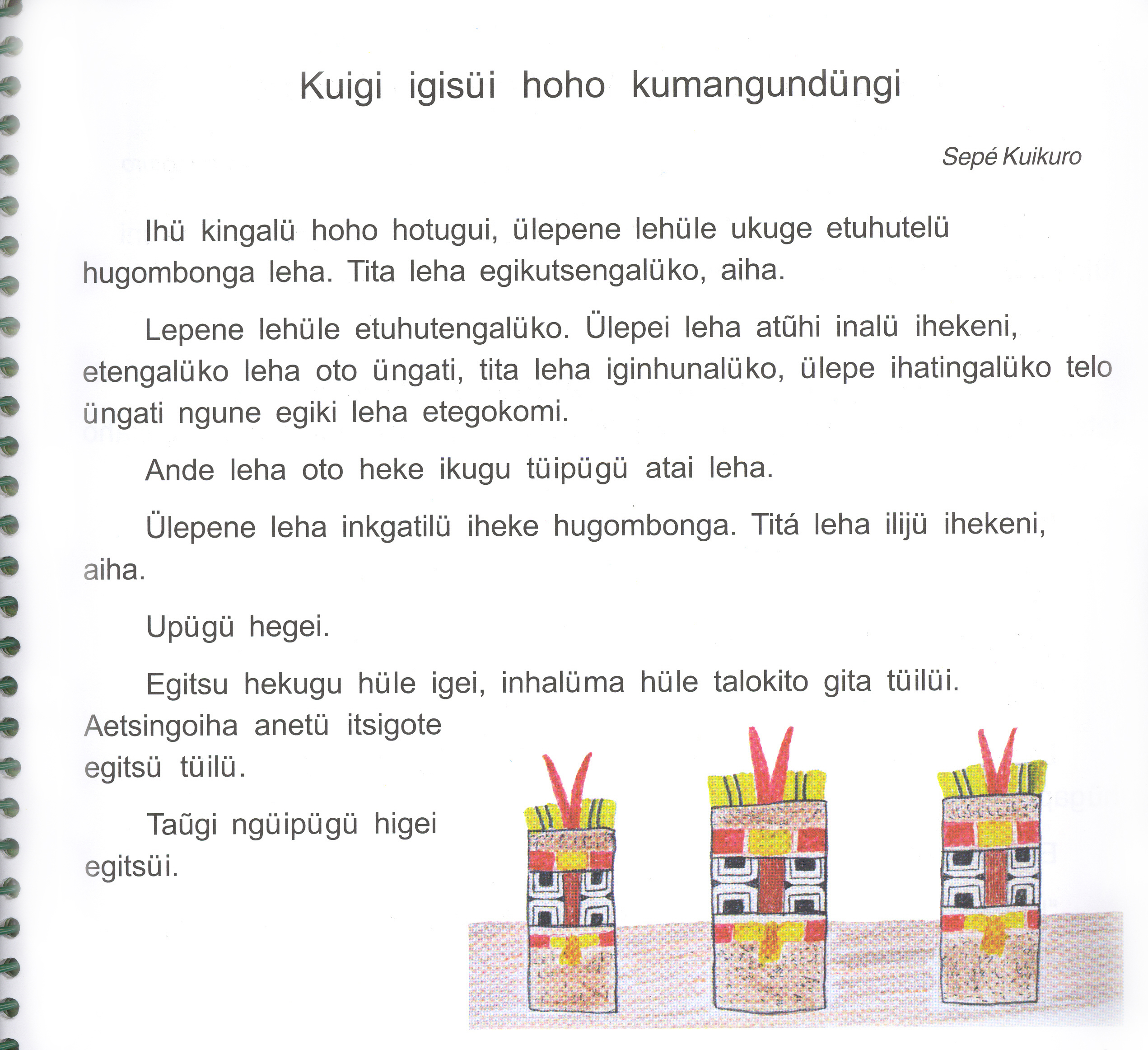
The Kuikúro still speak their mother language. Speakers of other Upper Xingú languages are limited to 10%. Speakers of Portuguese are, now, more than 50% of the population (various degrees of fluency, the majority of the speakers of Portuguese are men 40 years old or younger). In spite of the still healthy linguistic situation, we have been witnessing an acceleration in the pace of change in the last few years. It is increasingly common the presence of governmental officials, researchers, journalists, representatives of NGOs, photographers, film makers, doctors, tourists, televisions and other midia. Indians travel constantly to neighbouring cities and to the main Brazilian capitals. The presence of schools in the villages as well as the increasing number of Indians living in urban settings and attending city schools contributes to the growing use of Portuguese among the younger generation. Portuguese is the lingua-franca in contacts with non-indigenous society, and increasingly common in the vocabulary of the Upper Xingú languages. Bilingualism is increasing rapidly.
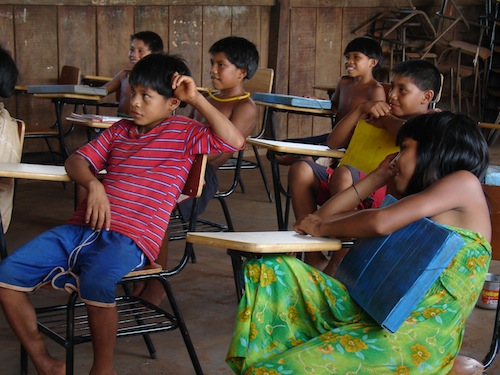
The school of Ipatse village (Bruna Franchetto, 2006)
References
Meira, Sérgio & Franchetto, Bruna – “The Southern Cariban Languages and the Cariban Family”. International Journal of American Linguistics, vol 71, n. 2: 127-190. Chicago: Chicago University Press. 2005.
Meira, Sérgio. “A família linguística caribe (Karib)”. Revista de Estudos e Pesquisas. Brasília: FUNAI, CGEP/CGDTI, Vol. 3, N. 1/2, pp. 157-174. 2006.
http://www.funai.gov.br/projetos/Plano_editorial/Pdf/REP3-2-1/06A_familia_linguistica_Caribe_Karib_Sergio_Meira.pdf
Steinen, Karl von den. Unter den naturvolkern Zentral-Brasileins. Berlin: Dietrich reamer. 1894.





